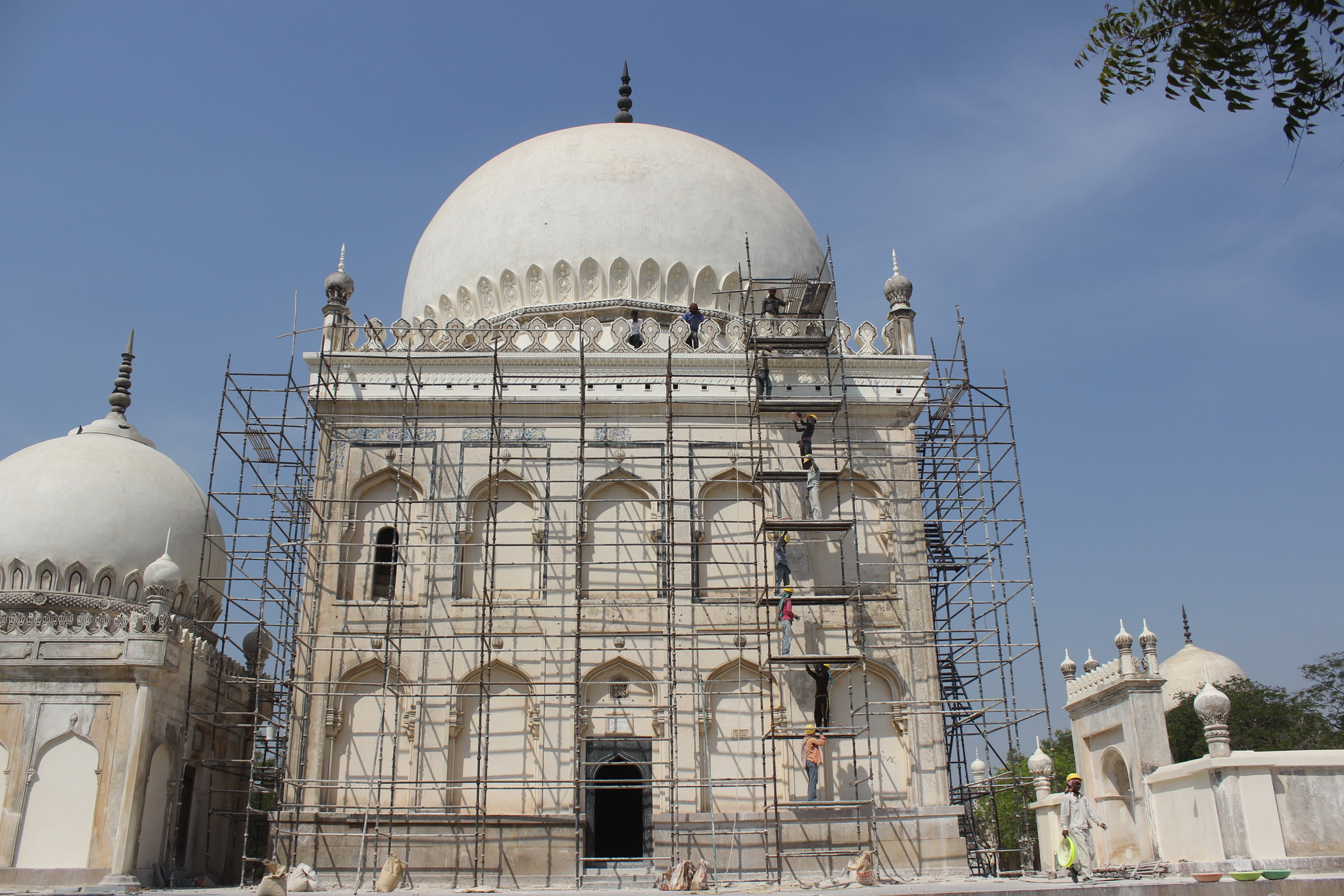The Quli Qutb Shah Archaeological Park includes 70 structures, encompassing 40 mausoleums, 23 mosques, five step-wells/water structures, a hamam (mortuary bath), pavilions, garden structures and enclosure walls built during the reign of the Qutb Shahi Dynasty that ruled the Hyderabad region for 170 years in the 16th and 17th centuries.
A Memorandum of Understanding (MoU) for a ten-year, integrated conservation and landscape restoration project at the Quli Qutb Shah Tomb complex in Hyderabad was signed in 2013 by the Andhra Pradesh State Department of Archaeology and Museums, the Quli Qutb Shah Urban Development Authority and the Aga Khan Trust for Culture (AKTC) and Aga Khan Foundation to begin revitalisation work on the Quli Qutb Shah Archaeological Park in Hyderabad.
aktc-india-hyderabad-95618.jpg

The signing of the MoU has been preceded by a year-long documentation programme, where each of the 70 structures within the tomb complex - Deccan Park area have been documented and their conservation needs established. Topographical surveys of the entire 106 acre site have also been undertaken and a landscape master plan prepared.
As with the AKTC projects in Delhi, the Aga Khan Development Network agencies are undertaking the proposed conservation and landscaping works with their own financial resources or those raised from partner agencies such as the Sir Dorabji Tata Trust and other corporate donors.
The conservation works are undertaken from master craftsmen using traditional tools, building techniques and traditional materials respecting the intention of the original builders.
Further research including excavations were required prior to preparing detailed landscape proposals for the immediate setting of the monuments. A significant portion of the site would be developed as an ecological zone with plantations of local flora to encourage birds, as well as revive the historic water bodies.
aktc-india-hyderabad-ibrahim_qulis_tomb.jpg







